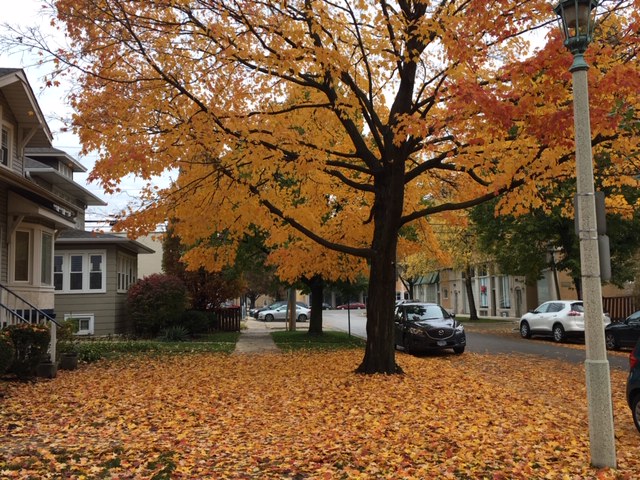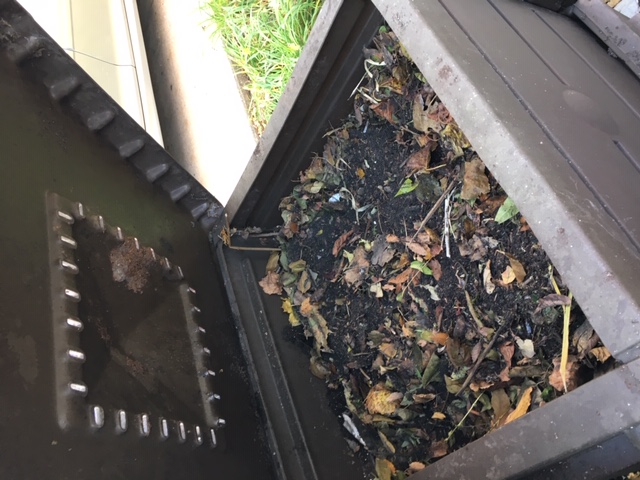
The other day I finally got to the bottom of something that had nagged at me for a long time: the compost bin.
I hadn’t gotten around to actually harvesting finished compost from that bin for months. That’s an absurd waste in at least two ways: If it’s still in the bin, the compost isn’t doing any good for my soil or my plants. And with autumn leaves—primo free compost fodder–falling everywhere, I need all the composting space I can get to make the most of the bounty.
This is the tidy, self-contained, urban-gardener style of compost bin, with a lid on top and a door at the bottom. The lid helps keep critters out and warmth in, so the composting organisms stay active and working in colder weather than they would in an open pile.
It’s a “continuous” composter, designed to provide a steady supply of small amounts of finished compost. You add your raw materials at the top, including weeds, leaves and fruit and vegetable scraps, at the top, and the composters go to work on them. Lower layers gradually get more broken down. When you need a bit of compost, you open the door at the bottom and remove the oldest and most well decayed. My problem is remembering to do that.
This time, I was undeservedly pleased with the results of my forgetfulness. Since the bacteria, insects, fungi, arachnids and other life forms that break down compost had been able to work undisturbed for so long, almost the entire bin was full of rich, brown, earthy, perfect compost. After digging into all the corners, I had bushels of the stuff.
There are many ways I can use compost. It can help unstick the dense, heavy texture of clay soil like mine. It improves the environment for plant roots if it’s mixed in a planting hole. It makes an excellent, nourishing mulch. Compost that is sifted into finer particles (I shake it through an old milk crate) can be the base for potting mix in garden containers or in the greenhouse.

At this time of year, I’m done planting. So I used my lovely compost to top-dress—just spreading it on the soil, where it will add organisms and healthy biological activity. Without worrying too much about even distribution, I scattered it liberally right on top of the fallen leaves in my perennial beds. The compost is full of organisms that will help break down those leaves, to the benefit of my soil and my plants.
Of course, not everything in the compost bin had dissolved into compost. I simply set aside all the half-digested oranges, banana peels, and less identifiable large chunks I came across. After I cleared out the bin, I tossed them back in to keep cooking, among deep layers of leaves and a few late weeds and frost-bitten annuals. I scattered in a handful of finished compost with each layer, to provide a starter population of bacteria and other composters.
At the end of the day, I had a bin full of compost spread over the garden and another bin full of future compost cooking. It was enormously satisfying. I need to forget about my compost bin more often.


